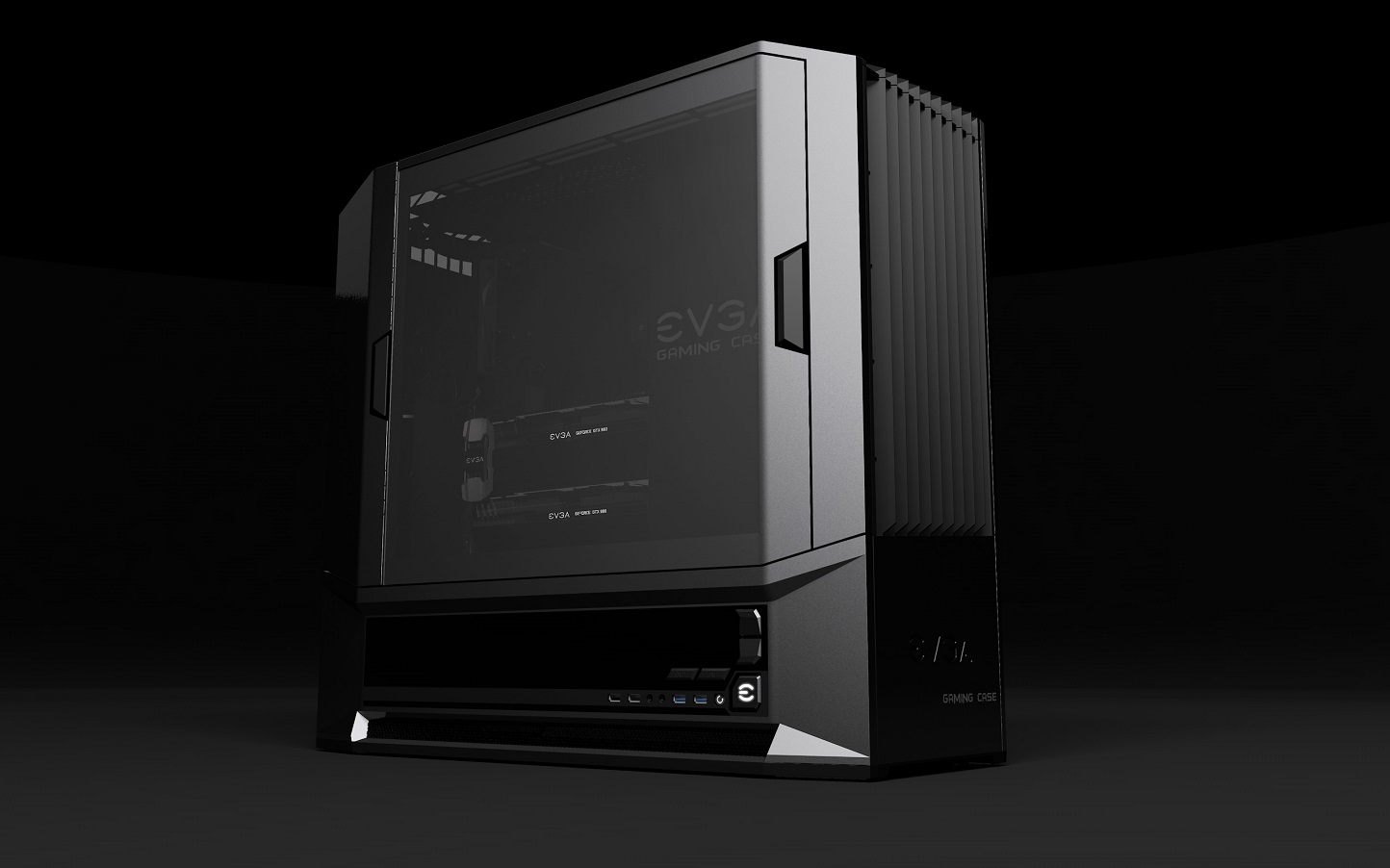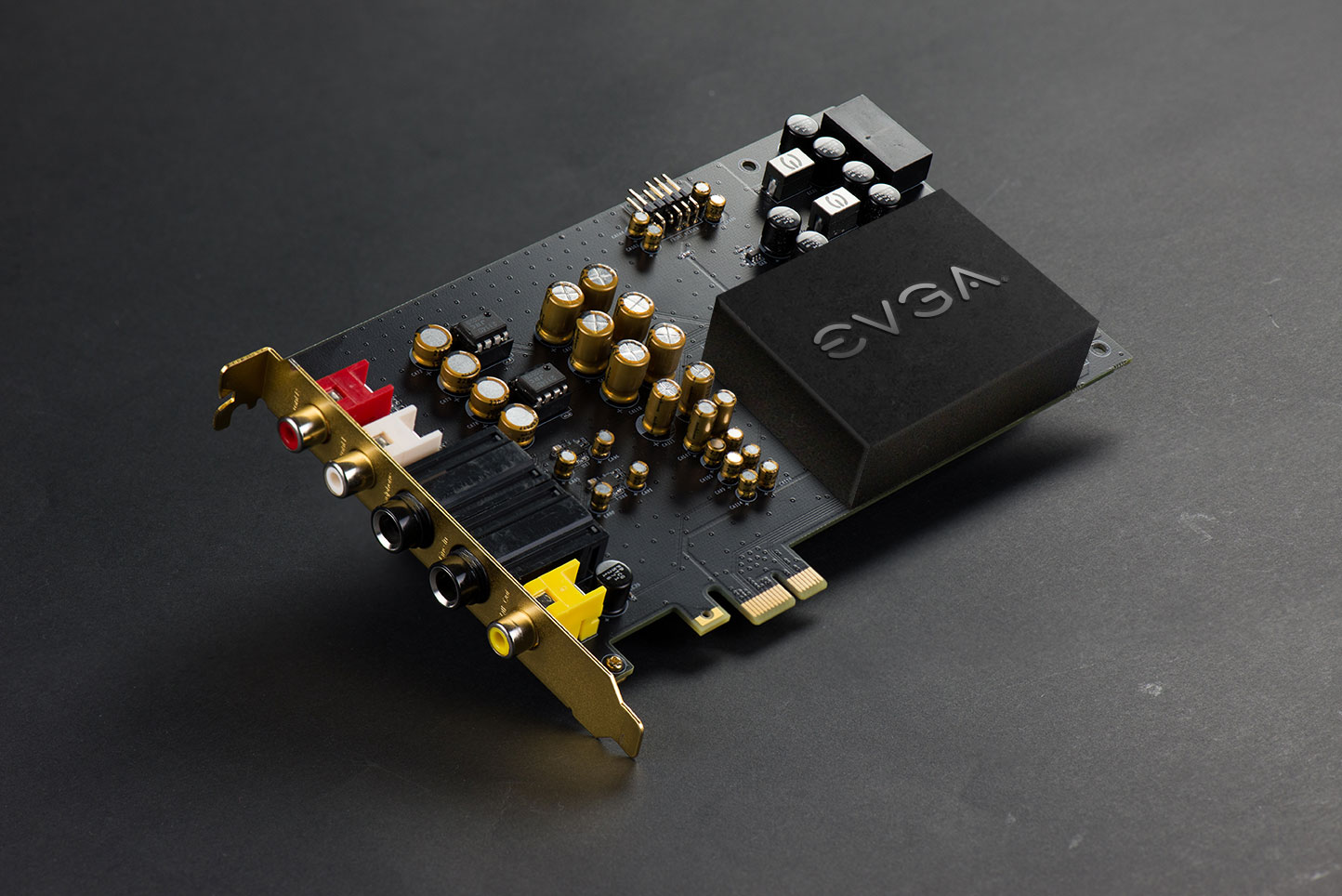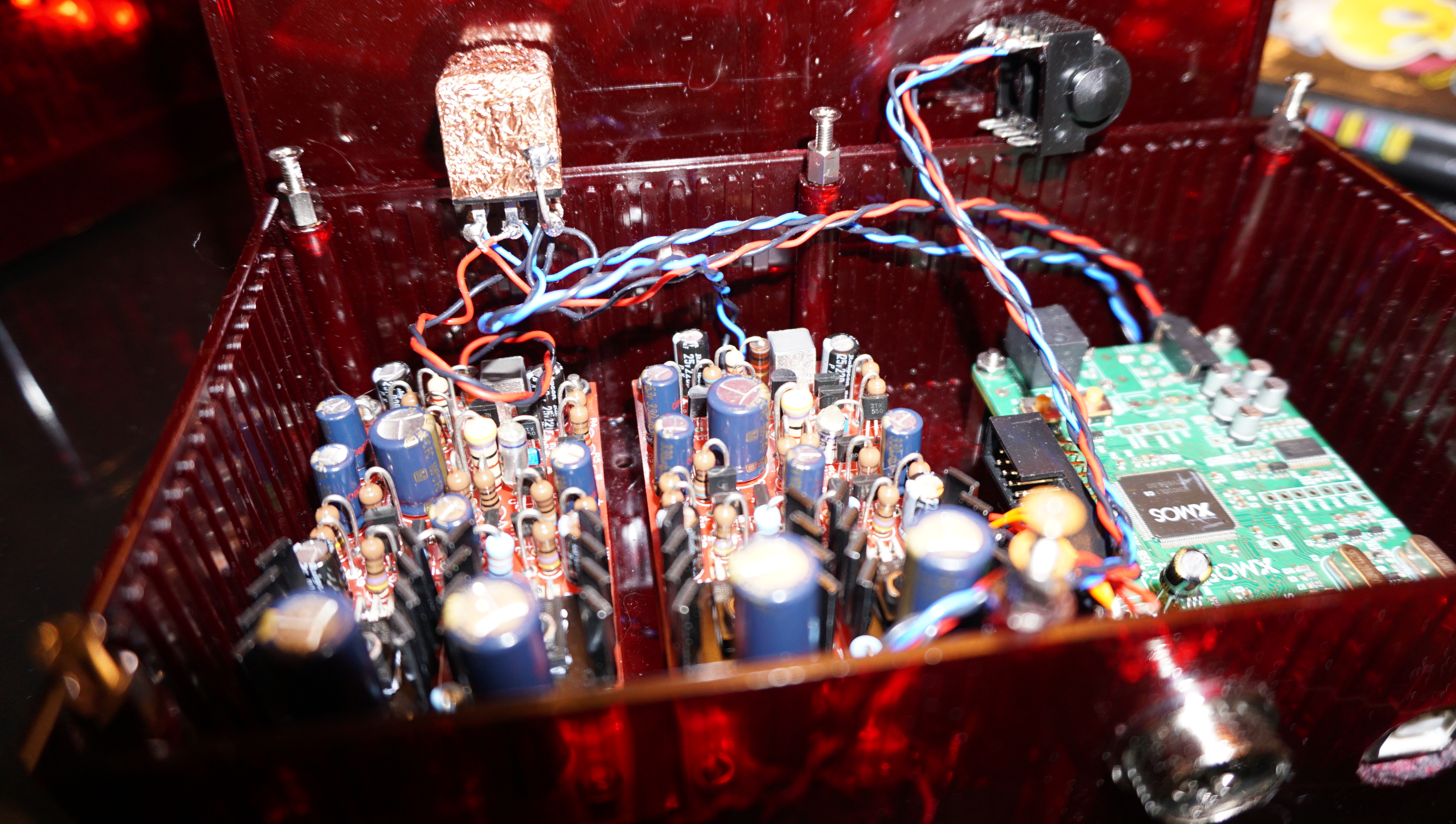EVGA Shows Off Gaming Laptop, Case, Sound Card At CES 2016
Among a couple other goodies, EVGA is presenting a new gaming notebook, a case, and a sound card at CES.
EVGA has a handful of goodies for CES 2016, and that includes three surprises: a new gaming laptop, a new gaming case, and a new sound card, all new categories for the graphics card maker. At this time, we don’t have a heap of details available on these products, but here is what we do know.
The Case That Shall Not Be Named
This is one of EVGA's first cases. The first was actually the Hadron Air Mini. This one, in contrast, is a full-sized case designed to house a full-sized gaming system. The case is still in development, but it will have flexible cooling options and some modularity for customizability. A fan controller with a speed display is mounted on the side, as is all the front I/O.
What’s it called? EVGA doesn’t know yet, so nor do we.
A Wild Gaming Laptop Appears
Fortunately, EVGA has thought of a name for its gaming laptop. It is called the SC17, from which you’ve probably already guessed that it is a 17.3-inch notebook. It is designed entirely by EVGA and packs all the hardware into a sleek 1.05-inch thick unibody chassis.
The Intel Core i7-6820HK CPU will be clocked at up to 3.8 GHz, with the GTX 980M clocking in at a staggering 1200 MHz. DDR4 Memory is supplied by G.Skill and will run at up to 2666 MHz. The BIOS is built specifically to support overclocking, and it has a 240 W power brick to keep it juiced up.
Display resolutions will reach as high as 4K, and EVGA even opted to include G-Sync options. To top it off, it also has a USB 3.1 Type-C port.
Figured out yet where its name comes from? The 17 is obvious, and SC stands for SuperClocked.
Get Tom's Hardware's best news and in-depth reviews, straight to your inbox.
An EVGA company representative said that pricing will sit around $2,600 for a top-tier model, but that isn't finalized just yet.
Something For Your Ears
EVGA is also working on a sound card, but like the case, it doesn’t have a name yet. It will be available as a PCI-Express card and as an external USB solution, and have a signal-to-noise ratio of 130dB. We were told that it is built with Japanese Rubycon capacitors and special Italian-made resistors. EVGA designed the card in cooperation with Audio Note from the U.K. Assembly happens in Taiwan. We’ll have to sit tight for further details in future announcements.
Pricing for the sound card will sit at around $200 when it hits in Q2, but again, this isn't final pricing yet. Heck, the card is still very much in its prototype phase. EVGA also told us that it may try to incorporate the sound card in its laptop somewhere in the future, but that was just an idea the company is playing with.
And that’s it for EVGA at CES this year. Don’t forget to check out their VR edition of the GTX 980 Ti and the new expandable water-cooling gear too.
Follow Niels Broekhuijsen @NBroekhuijsen. Follow us @tomshardware, on Facebook and on Google+.
Niels Broekhuijsen is a Contributing Writer for Tom's Hardware US. He reviews cases, water cooling and pc builds.
-
mlee 2500 That sound card look like its only digital out is coaxial.Reply
While I actually prefer coaxial S/PDIF because it is less fragile then optical, the fact of the matter is, such a connection is becoming increasingly rare on receivers and amplifiers. For that matter, S/PDIF's days may be numbered as it is limited to compressed 5.1 or 7.1 signals, and does not have the bandwidth required for newer versions of Dolby or DTS surround (I notice the newest AppleTV device omits S/PDIF all together, making it's audio out HDMI only).
Of course, if all you are doing is piping out a digital audio signal to an amplifier or surround receiver, you may wonder why you need a discreet sound card at all. The only argument I can imagine is if it takes significant load off the CPU, and with today's multi-core screamers I have a hard time seeing allot of practical return on the effort and cost, especially in exchange for filling up another slot with another card which diminishes airflow in the case. Maybe this is targeted to people without an amp and with analog susceptibility. -
thor220 ReplyThat sound card look like its only digital out is coaxial.
While I actually prefer coaxial S/PDIF because it is less fragile then optical, the fact of the matter is, such a connection is becoming increasingly rare on receivers and amplifiers. For that matter, S/PDIF's days may be numbered as it is limited to compressed 5.1 or 7.1 signals, and does not have the bandwidth required for newer versions of Dolby or DTS surround (I notice the newest AppleTV device omits S/PDIF all together, making it's audio out HDMI only).
Of course, if all you are doing is piping out a digital audio signal to an amplifier or surround receiver, you may wonder why you need a discreet sound card at all. The only argument I can imagine is if it takes significant load off the CPU, and with today's multi-core screamers I have a hard time seeing allot of practical return on the effort and cost, especially in exchange for filling up another slot with another card which diminishes airflow in the case. Maybe this is targeted to people without an amp and with analog susceptibility.
Most gamers don't even know about DACs / AMPs so to them they only have to compete against other sound cards. -
libastral Glad to see more vendors offering quality PCIe audio. Never liked USB DAC's, they seem like a kludge to me, not a proper, native PC sound card.Reply
Hopefully this will compete with Devil HDX ($160) in terms of price, not Xonar Essence ($260) and will have good drivers with ASIO support. -
RchUncleSkeleton To my dismay and I'm sure many others as well, this laptop has a chiclet keyboard, as popularized by apple. Chiclet was not made for gaming and certainly is not typing friendly, in my opinion. At this price point, it should have been a scissor switch or perhaps even a low profile mechanical switch keyboard.Reply





